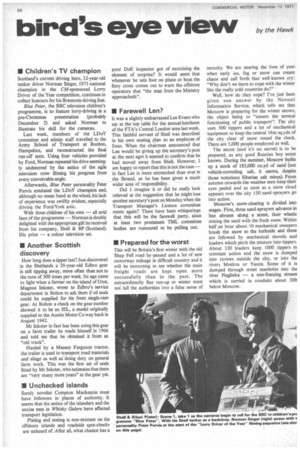• Prepared for the worst
Page 58

If you've noticed an error in this article please click here to report it so we can fix it.
This will be Britain's first winter with the old Shap Fell road by-passed and a lot of new motorway mileage in difficult country and it will be interesting to see whether the main freight roads are kept open more successfully than in the past. The extraordinarily fine run-up to winter must not lull the authorities into a false sense of security. We are nearing the time of year. when early ice, fog or snow can create chaos and call forth that well-known cry: "Why don't we learn to cope with the winter like the really cold countries do?" ' Well, how do they cope? I've just been given one answer by the Novosti Information Service, which tells me that Moscow is preparing for the winter snows, the object being to "ensure the normal functioning of public transport". The city uses 500 tippers and a lot of mechanical .equipment to keep the central 16m sq.yds of the city_ clear of snow round the clock. There are 5,000 people employed as well.
The secret (and it's no secret) is to be prepared, as any good Russian boy scout knows. During the summer, Moscow builts up a stock of 185,000 cu.yd of sand (not vehicle-corroding salt, it seems, despite those notorious Siberian salt mines). From autumn onwards the weather men keep their eyes peeled and as soon as a snow cloud appears over the city 150 sand-sprayers go into action.
Moscow's snow-clearing is divided into stages. First, three sand-sprayers advance in line abreast along a street, their wheels mixing the sand with the fresh snow. Within half an hour about 10 mechanical sweepers brush the snow to the kerbside and these are followed by mechanical shovels and loaders which pitch the mixture into tippers. About 120 loaders keep 1000 tippers in constant action and the snow is dumped into ravines outside the city, or into the rivers Moskva or Yauza. Some of it is dumped through street manholes into the river Neglinka — a non-freezing stream which is carried in conduits about 30ft below Moscow.










































































































































































































